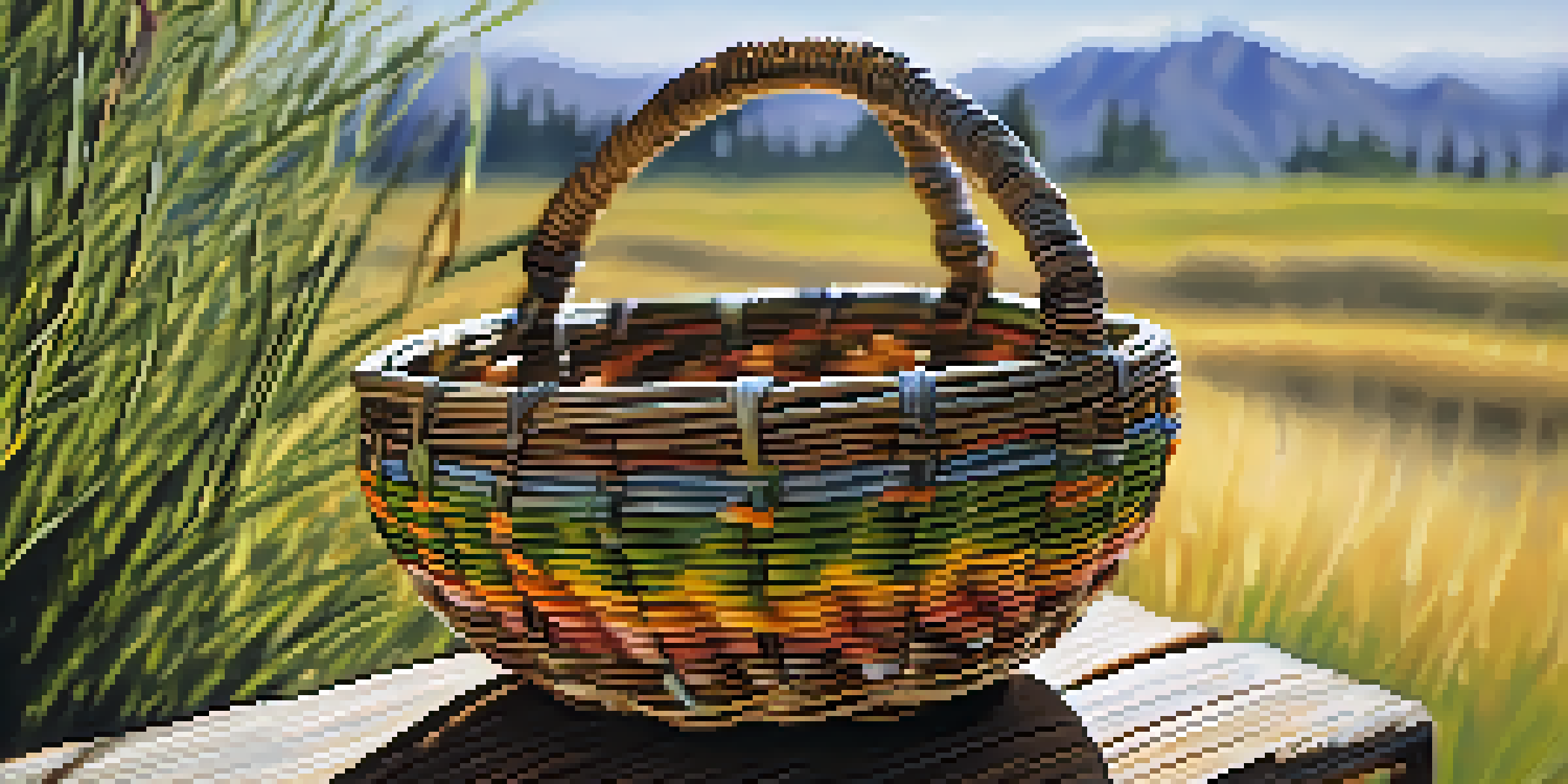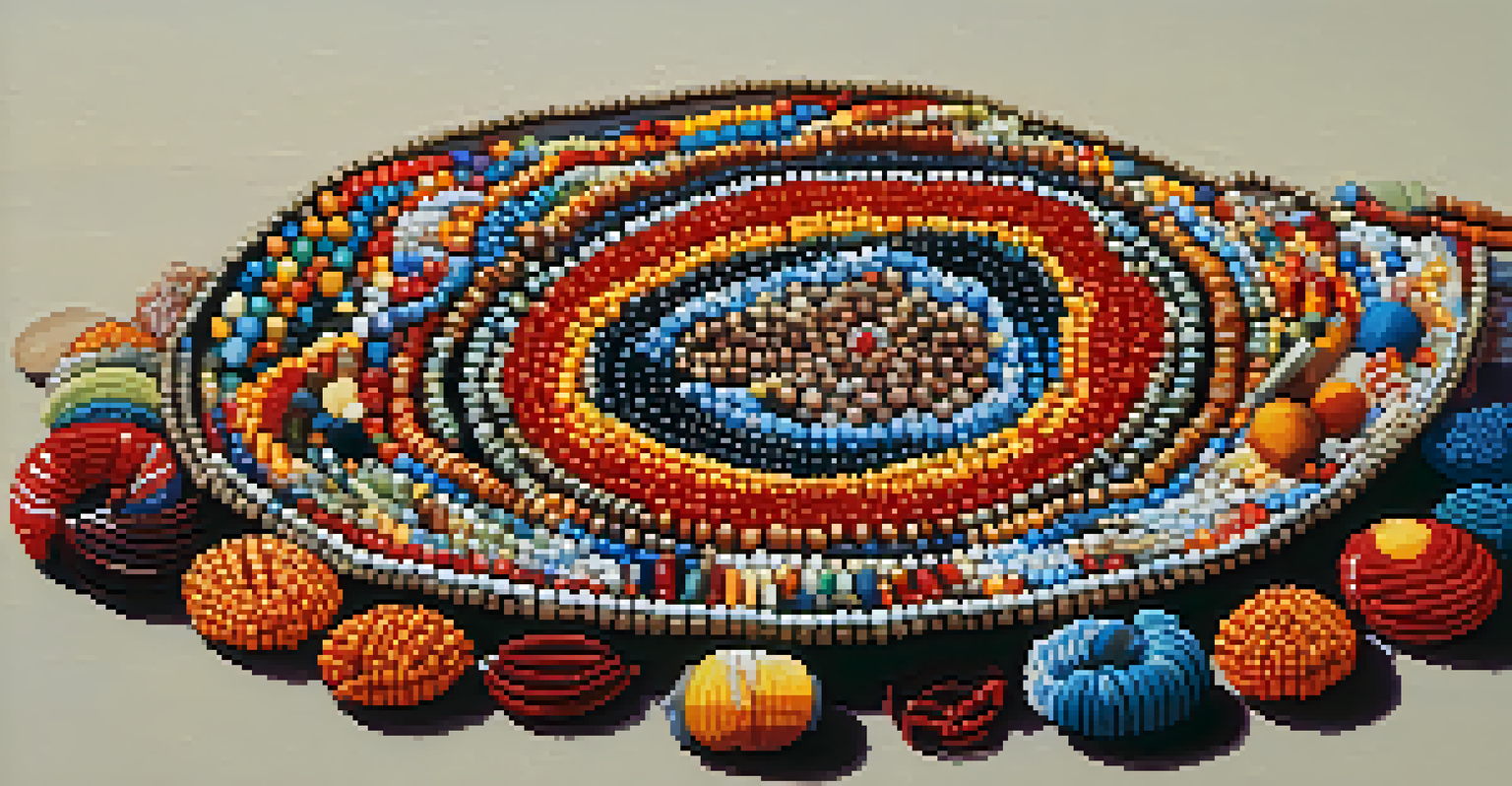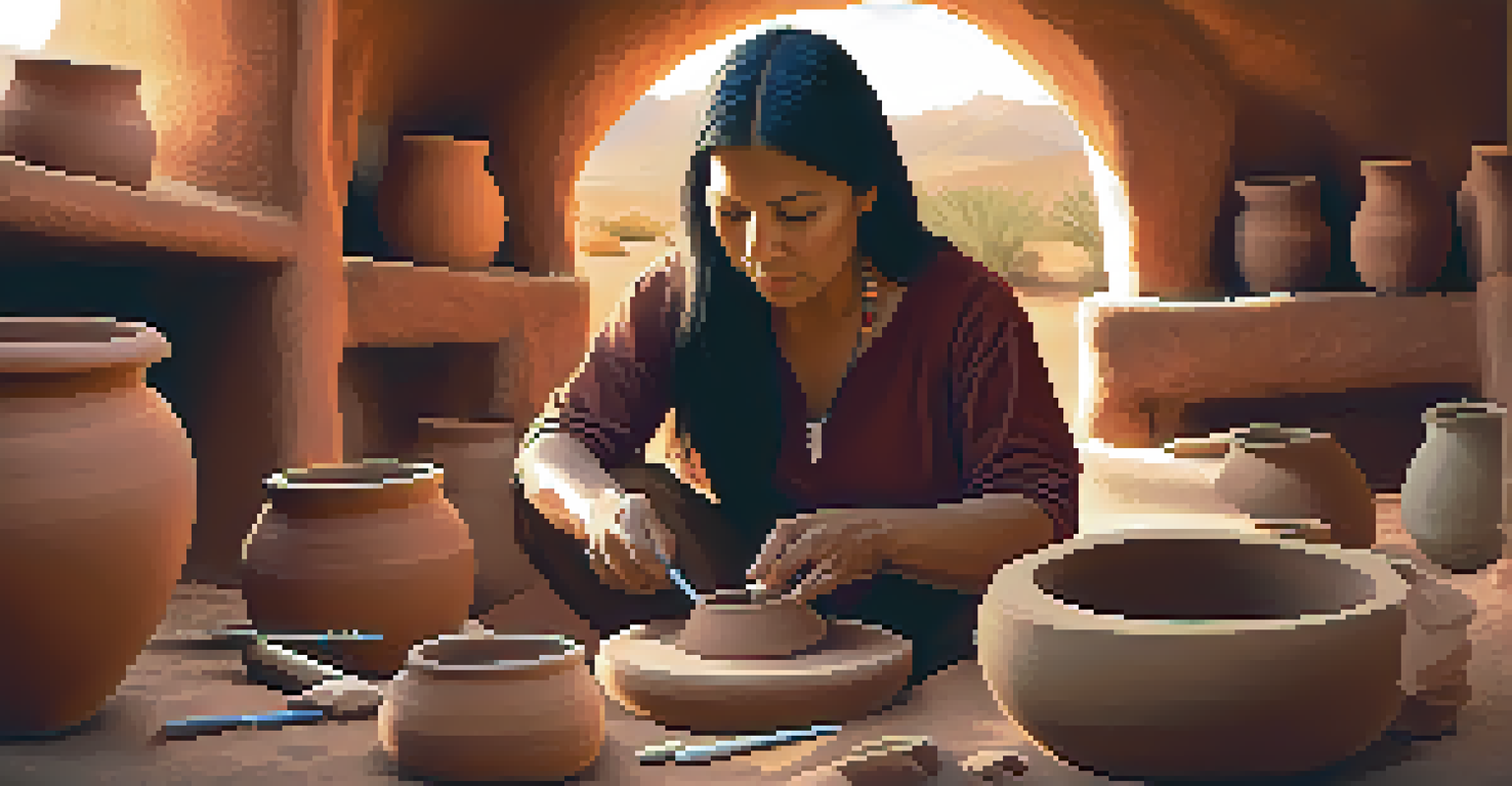Traditional Arts and Crafts of California Native Americans

Introduction to California Native American Art Forms
California's Native American tribes boast a rich tapestry of traditional arts and crafts that reflect their unique cultures and histories. These art forms range from intricate beadwork to striking basketry, each piece telling a story steeped in tradition. Understanding these crafts requires appreciating the deep connection between the artists and their environment, as natural resources play a vital role in their creation.
Art is the most beautiful of all lies; it is the most truthful of all lies. It is told through the stories of the people and their culture.
The significance of these art forms extends beyond mere aesthetics; they are also functional and hold cultural importance. For instance, many baskets are crafted for specific purposes, such as gathering food or ceremonial uses. This blend of utility and artistry illustrates how these crafts are woven into the daily lives and spiritual practices of the tribes.
As we delve deeper into these fascinating art forms, we’ll uncover the diverse techniques and materials used by various tribes, showcasing the incredible skill and creativity of California's Native American artisans.
The Art of Basket Weaving: A Timeless Tradition
Basket weaving is one of the most cherished traditional crafts among California Native Americans. Tribes such as the Yurok, Karuk, and Miwok have long been celebrated for their exquisite baskets, which are often made from materials like willow, sedge, and redbud. These baskets are not only functional but also serve as a canvas for artistic expression, featuring intricate patterns and designs that convey cultural symbolism.

The process of basket weaving is both labor-intensive and meditative, requiring patience and a deep understanding of natural materials. Weavers often pass down their knowledge through generations, ensuring that the techniques and stories remain alive. This sense of continuity fosters a strong community bond and a shared identity among the tribes.
California Native Art: A Cultural Legacy
The traditional arts of California's Native American tribes, such as basket weaving and beadwork, reflect their rich cultural heritage and deep connection to nature.
Each basket woven tells a story of its maker and their connection to the land, demonstrating how art can preserve cultural heritage. Today, many contemporary artists are blending traditional techniques with modern influences, ensuring that this ancient craft continues to evolve.
Beadwork: Colorful Expressions of Identity
Beadwork is another vibrant aspect of California Native American arts, often used to adorn clothing, accessories, and ceremonial items. The intricate designs and vibrant colors not only enhance the visual appeal but also hold cultural significance, often representing tribal identity and personal stories. For many tribes, beadwork is a way to communicate their heritage and beliefs.
Native American art is not simply a craft; it is a reflection of the culture, history, and identity of the people.
Historically, beads were crafted from natural materials like shell, bone, and stones, but today, glass beads have become popular due to their availability and variety. The shift to glass beads has not diminished the artistry; rather, it has allowed for innovative designs and patterns that reflect contemporary influences while honoring traditional styles.
Workshops and community gatherings often promote beadwork as a means of cultural exchange and education. These gatherings not only foster skills but also strengthen community ties, as participants share techniques and stories, continuing the legacy of this beautiful art form.
Ceremonial Arts: Rituals and Spirituality in Craft
Many California Native American tribes create ceremonial arts that play a significant role in their spiritual practices. Items such as masks, regalia, and ceremonial tools are often crafted with great care, embodying the beliefs and values of the community. These artifacts serve not only as art but also as crucial components in rituals that celebrate life, death, and everything in between.
The materials used in these ceremonial crafts are often selected for their symbolic meanings, such as feathers representing the connection to the spirit world or specific colors denoting certain emotions or events. This intentionality highlights the deep spiritual connection that artisans have with their work, where every detail is imbued with meaning.
Ceremonial Arts and Spirituality
Ceremonial crafts, including masks and regalia, embody the spiritual beliefs of Native American communities, highlighting the significance of art in their rituals and traditions.
Through these rituals, the arts become a living expression of culture, allowing the community to reconnect with their ancestors and pass on traditions to future generations. As we explore these ceremonial arts, we gain insight into the heart and soul of California Native American cultures.
Pottery: From Functionality to Fine Art
Pottery is an essential craft for many California Native American tribes, historically used for cooking, storage, and ceremonial purposes. The art of pottery-making involves shaping clay into various forms and often decorating them with intricate designs that reflect the tribe's culture and beliefs. This craft not only showcases creativity but also emphasizes practicality in daily life.
Traditionally, pottery was made using local clay and natural pigments for decoration, resulting in unique pieces that resonate with the surrounding environment. Over time, artisans have adapted their techniques and styles, often blending traditional methods with contemporary practices. This evolution demonstrates the craft's resilience and relevance in the modern world.
Today, pottery has transcended its utilitarian roots, with many artisans creating pieces that are purely artistic. Exhibitions and markets showcase this beautiful fusion of form and function, allowing audiences to appreciate the rich cultural narratives embedded in each creation.
The Role of Oral Traditions in Craftsmanship
Oral traditions play a crucial role in the arts and crafts of California Native Americans, as stories are often passed down through generations alongside the skills needed to create art. These narratives not only teach techniques but also convey the values, beliefs, and history of the tribe. Art becomes a vehicle for storytelling, allowing individuals to connect with their heritage and understand their place in the world.
Through storytelling, artisans learn about the significance of materials and forms, which can influence their creative choices. For example, a story about the creation of a specific design might inspire an artist to incorporate that element into their work. This intertwining of narrative and craft enriches the artistic process, creating a deeper connection to the artwork.
Modern Artists Blend Tradition and Change
Contemporary Native American artists are reinterpreting traditional crafts, merging age-old techniques with modern themes to address social issues and preserve cultural identity.
Preserving these oral traditions is essential for maintaining cultural identity, especially in a rapidly changing world. Many tribes are working to revitalize storytelling practices, ensuring that future generations continue to learn and grow through the powerful medium of art.
Modern Influence: Contemporary Native American Artists
Today, many contemporary Native American artists are reinterpreting traditional arts and crafts, blending age-old techniques with modern influences. This evolution is not about abandoning tradition; rather, it reflects a dynamic culture that embraces change while honoring its roots. These artists often address current social issues, using their work as a platform for advocacy and education.
For instance, some artists incorporate non-traditional materials or explore themes related to identity and environmental concerns, creating dialogue around the complexities of modern Native American life. This fusion of the traditional and contemporary allows for a richer understanding of the culture, as it bridges the past with the present.

Exhibitions featuring contemporary Native American art are gaining recognition, providing a platform for these voices to be heard. As audiences engage with these modern interpretations, they gain a deeper appreciation for the ongoing legacy of California Native American arts and the resilience of its communities.